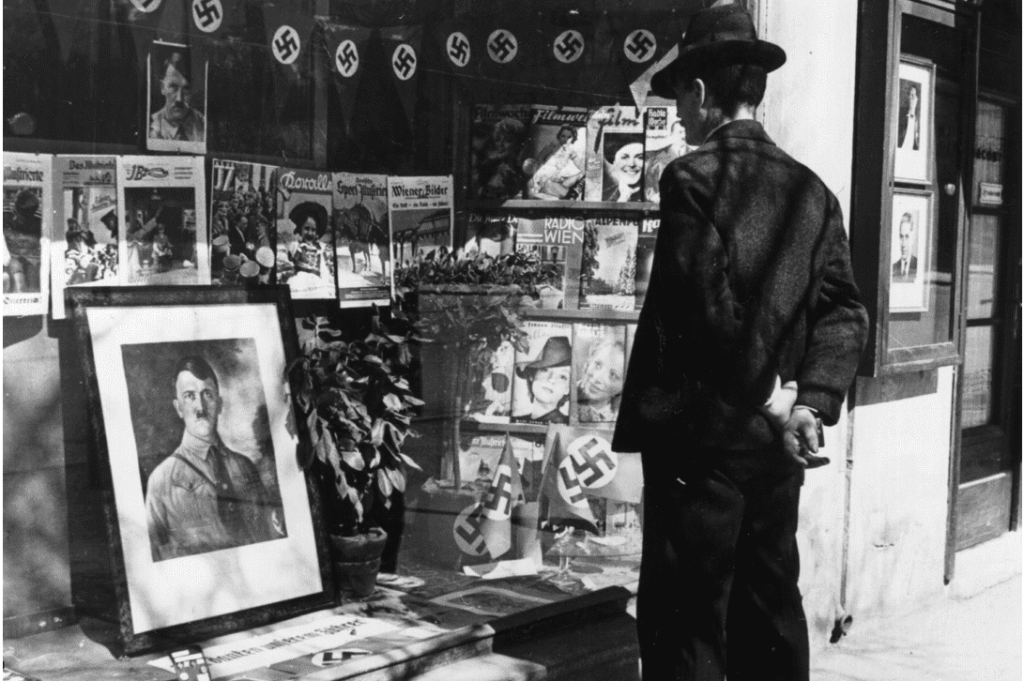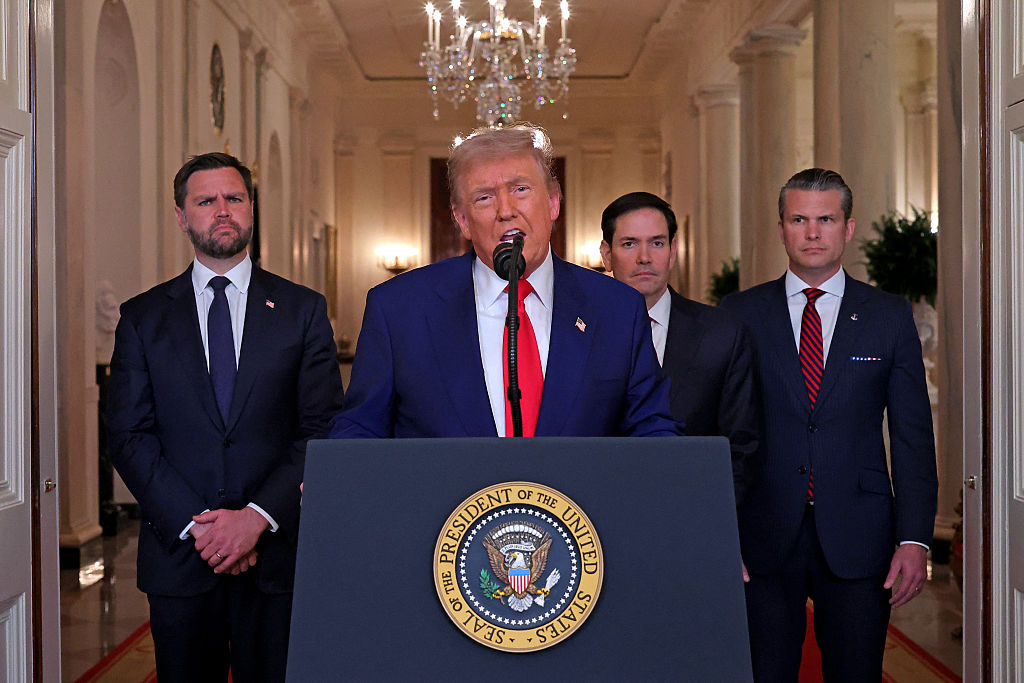It was a clear cold morning in January 1936 when Reichsführer-SS Heinrich Himmler arrived at the luxurious Regina Palast Hotel in central Munich. He had come to pick up a group of businessmen for a day trip. Their destination: Dachau concentration camp.
Nazi Germany’s first official camp had been set up by Himmler in March 1933 to detain the new regime’s political enemies. It became the prototype on which other camps were modeled. Himmler’s wealthy guests were given a personal tour by the SS leader and were impressed. Their host was “very carefully prepared and dressed up,” one of them commented afterwards.
As the party walked through Dachau, they were shown uniformed inmates in workshops — forced laborers such as tailors, carpenters and cobblers. The businessmen then tasted the food in the camp kitchens before taking a look round the punishment block. After lunching in the canteen they departed to visit a nearby porcelain factory, also run by the SS, before returning to Munich for a lavish dinner.
Impressed by what they perceived to be an orderly system of prison labor, the businessmen agreed to join the Freundeskreis Himmler, an elite group which provided the SS with money outside its regular budget, for “cultural tasks,” as Himmler put it. In total, the organization received around one million marks a year to fund its eugenicist programs.
In exchange, the SS donors gained access to an exclusive social circle that met every other Wednesday at the Aero Club in Berlin, opposite Himmler’s HQ. The company included such industry giants as Friedrich Flick, who had amassed a fortune during World War One and the Weimar Republic, Rudolf Bingel, CEO of Siemens-Schuckert, and Richard Kaselowsky, CEO of the baking company Dr Oetker.
These and other “Nazi billionaires” are the subject of the Bloomberg News journalist David de Jong’s new book, which sets out to investigate “the dark history of Germany’s wealthiest dynasties.” As a German-speaking historian, I have to admit that I was skeptical about the prospect of another book on this subject. There has been a vast amount of recent research into the role businesses played in allowing Hitler to come to power and inflict terrible suffering on Europe through war and genocide.
Some cases are obvious examples of culpability. When I read history at the University of Jena in Thuringia, the department helped investigate the nearby, by then defunct, company Topf and Sons, which produced crematoria and ventilation systems for the gas chambers at Auschwitz. It was an important if disturbing project that resulted in the establishing of an education center. Such efforts by families or businesses who sponsor research are now fairly commonplace. Other financial pillars of the Nazi regime with more familiar names such as Daimler-Benz, Allianz and Deutsche Bank have commissioned historians to investigate their past.
But de Jong brings much to the table. As he points out, many German business dynasties are still keen to “sidestep a complete reckoning with the dark history that stains their fortunes.” A recent example is the young heiress of a biscuit empire. Verena Bahlsen claimed in 2019 that her company had nothing to be ashamed of, as during the Nazi years “we paid forced laborers the same as Germans and treated them well.” A scandal erupted, and investigations have since found that the mostly female deportees from Poland and Ukraine who were forced to work in her family’s biscuit factory in Hanover received only a quarter of regular pay.
As well as reminding us of the continuing ignorance and willful denial of some German tycoons, de Jong also points out that there is not much accessible work on this topic in the Anglosphere. Nazi Billionaires takes English-speaking audiences into the murky world of Hitler’s financiers, and the author cleverly weaves his astonishing facts and figures into human stories.
Following five influential clans, the book shows in detail how greed, ideology and individual motivation led to the entanglement of business and politics that allowed the Nazis to flourish. The Quandts were a prime example. Their patriarch Günther’s much younger second wife Magda divorced him to marry the Nazi propaganda chief Joseph Goebbels. Her son Harald, from her marriage to Quandt, would be the only one of her seven children to survive beyond 1945. He and his half-brother Herbert went on to invest their father’s money in BMW after the war, thereby rescuing the company from bankruptcy. Herbert’s children still profit from this, as they own half the shares. His daughter, Susanne Klatten, is the richest woman in Germany today.
Its fascinating detail and engaging style make Nazi Billionaires a forceful book, revealing to a wide audience a vital aspect of Germany’s ongoing discussion with itself.
This article was originally published in The Spectator’s UK magazine. Subscribe to the World edition here.

























